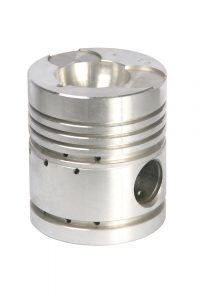
Most of us will be using piston-driven reciprocating air compressors. (Rotary screw and vane compressors are typically only used for industrial applications. )
These compressors work by drawing air in on the downstroke of the piston. It is then compressed up into the storage tank during the upstroke.
This piston movement is not unlike that of a car. And, just as with your car, a little lubrication can keep the metal-on-metal movement of the piston against the cylinder wall from seizing against each other.
With oil-free air compressors, the piston chamber comes pre-lubricated with a permanent lubrication coating. Usually, this is a Teflon coating that slowly degrades over the life of the compressor.
This Teflon surface creates smooth, slippery protection for the parts of the piston to slide against, and is designed to last for thousands of hours of use. It creates a virtually self-lubricating design.
There is also a sealed gearbox on oil-free compressors that are lubed to protect the moving parts of the compressor. These gears are not usually serviceable.
Sometimes these oil-free models operate at a slightly lower RPM to decrease the likelihood of overheating.
In an oil-filled unit, regular oil changes are required. There are a couple of different types of lubrication systems commonly used:
- Splash: This is the most common method. An “oil dipper” that is attached to the piston’s connecting rod, reaches into the oil sump and splashes oil around the bearings and up the piston chamber with each revolution.
- Pressure: This is more common in rotary compressors and some of the industrial models. This system uses an oil pump to build pressure and force the oil up “tubes” or passageways, creating a moving stream of oil inside the machine, similar to how your car’s lubrication works. This system also does a better job of keeping the piston head cooled during operation.
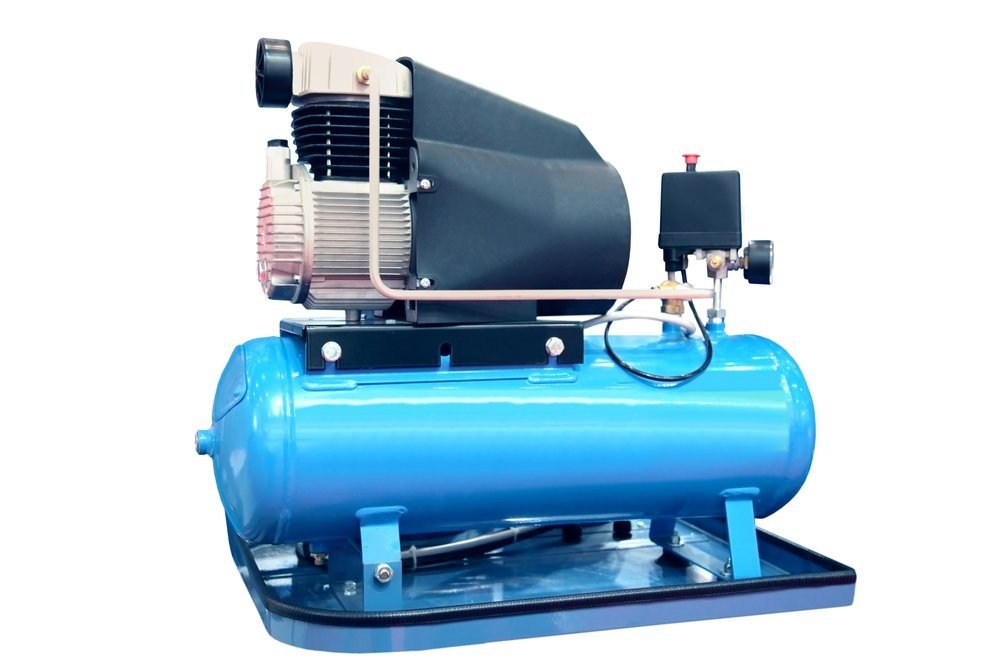
Lifespan Comparison
The oil-less compressor is designed with a shorter life expectancy than lubricated compressors. The Teflon coatings will eventually wear off, at which point most people throw the air compressor away and purchase a new one. Typically these compressors fail at about 2,000 hours of use. (In my experience that is about 18 months of contractor use).
The standard failure of these compressors (in my experience) is that they start building air more slowly due to scoring and leaks in the cylinder wall around the piston. This weakened state means that it will have to run for more extended periods in order to create the same amount of air.
Since a dying oil-free compressor is now operating for a more extended period of time, it creates more heat, which further degrades the pre-lubrication protection. This accelerates the wear even faster. This cycle of overuse leading to more wear continues until the compressor either never shuts off or fails in an overheated, seized, state.
This limited lifespan allows the manufacturers to create a much cheaper air compressor design, and the continuing demand in the market for a cheap, lightweight — yet sturdy — air compressor means that the oil-free compressors are here to stay.
One other point of note is that these pancake compressors and other oil-free designs typically use a universal motor instead of an induction one. Universal motors are lighter and tend not to last as long as induction motors. This isn’t a drawback as these motors tend to outlast the piston.
Oiled units will typically last for up to 15,000 hours or about 7 times as long as oil-free units. However, portable versions tend to be a little heavier.
Another little benefit of the oiled design is that they tend to use cast iron heads. These more durable piston heads are a more substantial metal that is resistant to internal scoring (scratches) and are a critical reason behind the oiled-filled design being so durable and long-lasting.
The best thing you can do to protect the lifespan of your oil-free compressor it to make sure that it gets frequent breaks to cool off and never to run it for an extended period of time.
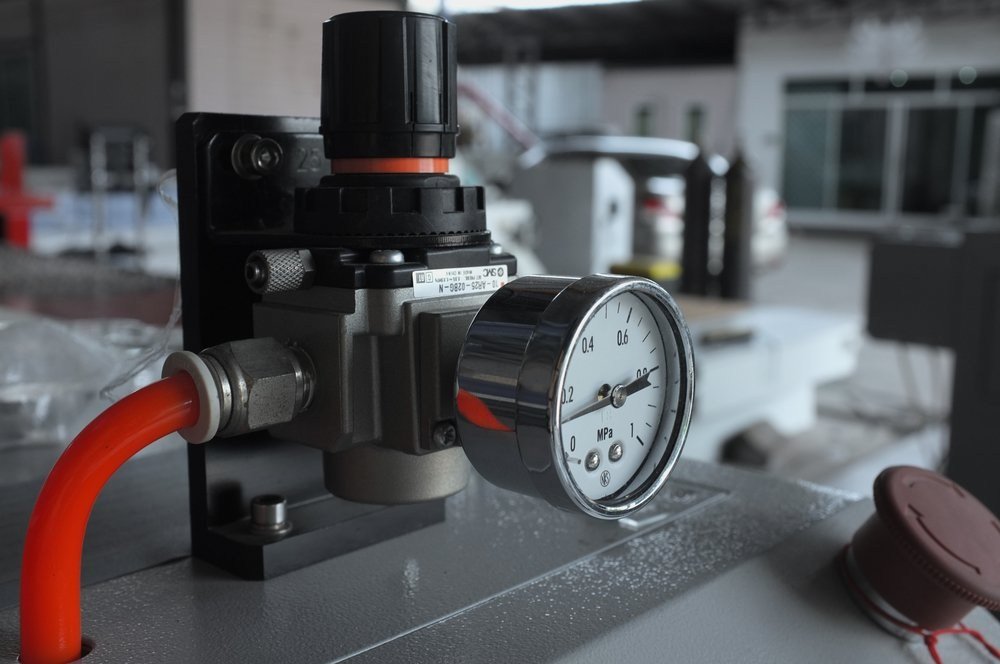
Air Compressor Maintenance
One of the attractive features of the oil-less design is that they are maintenance-free. Other than draining the compressor each night after use, there are no maintenance requirements.
There is also no oil to spill out on the client’s floor if the compressor gets kicked over.
The oil-filled models require a little more care. Typically, the oil changes should occur every 500 hours where the oil is drained and replaced. Additionally, you want to create a routine of checking the oil levels each day before you begin work.
These are simple steps. For something like a giant, 60-gallon industrial model, it makes sense to use an oiled design. For the smaller, portable units, many contractors opt for oil-free models so they don’t have to add maintenance to their busy schedules.
Noise Levels
One of the most significant differences is the noise levels. The oilless air compressors are extremely noisy, and most contractors use longer hoses to try to leave them outside and away from where they are working.
The oiled compressors tend to run quieter, due in part to the added lubrication.
Most of the oil compressors are quiet enough that you can carry on a conversation around them. Oilless compressors are not as soft.
At a bicycle shop that I worked at for one summer, they had an insulated room that housed an oilless compressor. That thing would clack so loudly that it was difficult carrying on a conversation around it — even though the insulated walls. When it died, they replaced it with a quieter, oiled unit.

If you are insistent on an oil-less unit but want to reduce the sound as much as possible, you can look at an air compressor intake muffler. These specialized filters are an aftermarket product that is designed to further reduce the noise of your compressor.
The Cold Weather Advantage of an Oil-Free Model
As much as this article seems to be focused on pointing out the weaknesses of the oilless compressor, these units do have one significant advantage: they are less affected by cold weather.
Oiled units deal with thicker oil, and that sometimes makes it harder for them to get started and build pressure. If you are working outside in freezing weather, you may experiment with a lighter-weight lube (most owner’s manuals recommend 30W/ISO100 so you might try the 20w/ISO68).
OIl-free models never have this problem and seem to work as well in cold weather as they do in warm.
Use Type
Both models create compressed air, but the significant differences come down to the volume of air they produce and what type of air tools you plan on using with them.
For framing nailers, it makes sense to use an oil-free model. Sure, you might need to buy a replacement every other year or so, but your air requirements are minimal, and the compressor is lightweight.
There are a handful of portable oil air compressors. These typically offer a slightly larger capacity and are suitable for fast-paced construction tools who want to run two nailers simultaneously.
A shop compressor — in my opinion — should be an oil-lubed air compressor. These models are not cheap, and you want to know that your investment is going to last for decades to come.
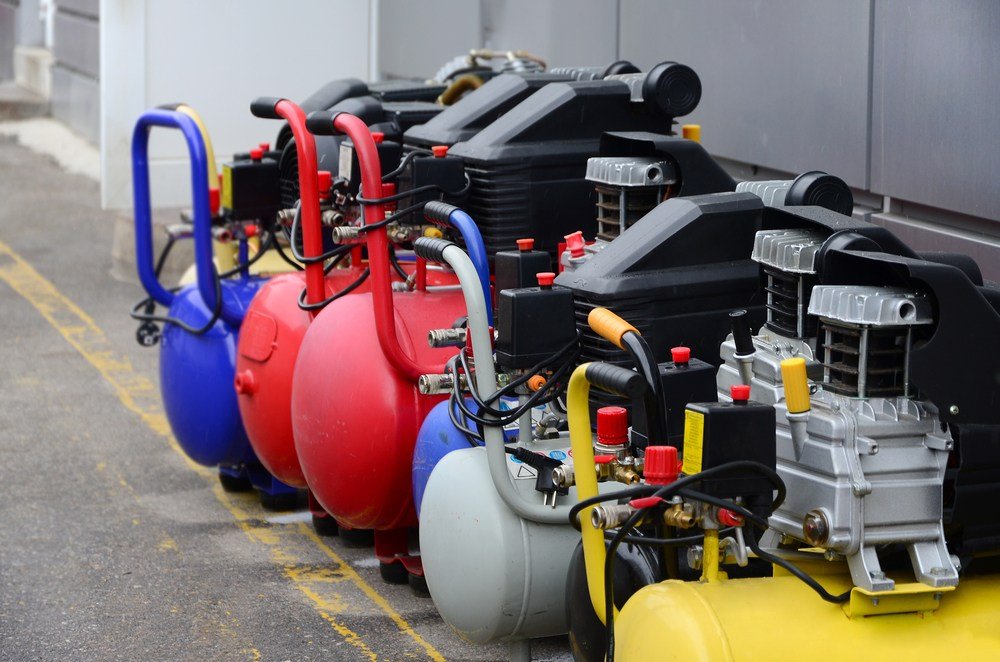
Choosing an Air Compressor
Oiled compressors are going to be best for high-volume work of greater than 5 CFM (Cubic Feet Per Minute). If you run a mechanic’s shop, you are going to want one. If you paint cars, you will need an oiled machine. If you run a high-paced construction crew or cabinet shop, you also need the heavy-duty resiliency that comes from an oil compressor.
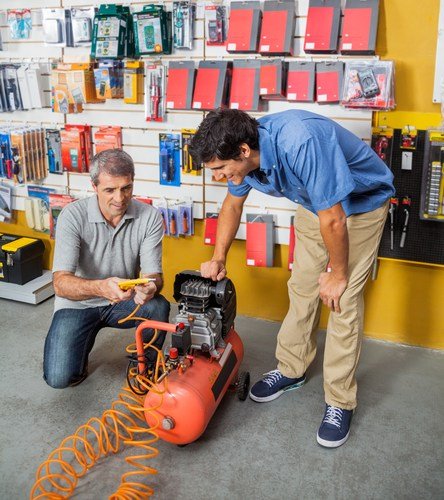
Oilless compressors are best for the occasional user such as the homeowner who is remodeling their own house or the family who needs a compressor for their garage. They have a lower output in the 2 to 5 CFM range. That said, some of the most massive construction crews that I work with only use oilless compressors. They understand that buying new compressors every couple of years as part of their business plan, and they enjoy the maintenance-free life that comes with the oil-free models. Ironically, a good, oiled, the model will likely last the same lifespan as 4 or 5 of these cheaper models, often making the oiled unit the more economical choice over 24 months or longer.
Whichever model you choose, one of the first considerations is the brand reputation of the company from which you are buying. Brands like Campbell Hausfeld and Ingersoll Rand have been around for decades and offer stronger support and better availability of parts. Even though pretty much all of the different compressors come from China, having a local brand that speaks your language and can support their warranty is vital.
Keep in mind that some models offer a shorter warranty if you plan on renting the compressor or using it for commercial work.
Does Oil Get Into The Air Lines And Cause Problems?
Not really. The more significant problem tends to be with water. In addition to draining the compressor nightly, there are some applications (such as painting or sandblasting) that makes sense to add an additional, external, dryer to the airline to remove excess water.
Any oil that escapes into the line is of so little quantity that it would be barely noticeable or measurable. Not to mention, most of the escaping oil is collected in the tank and released with the excess water at the end of the night.
Air Purity
Most pancake compressors and other job site models have a limited air filter on the intake. This can allow the compressor to such in dust and debris and further speed its demise.
A couple of thoughts are to keep the compressor further away from flying dust and to clean the filter frequently if you can. All oil-filled units have a larger air intake filter that is similar to what you would find in a car. These are removable and replaceable.
Maintaining Your Compressor For The Longest Lifespan
- Don’t Overheat It – all compressors have their limits known as duty cycles. Most oil-free designs are limited to only a 25-50% duty cycle which means that it needs to rest 50-75% of the time. This means that if it runs for 2 minutes, it may need 6 minutes of cool-down time before kicking on again. Running these compressors at a fast pace will kill them sooner. Meanwhile oiled unit can withstand longer duty cycles of 50-100%, without suffering as much damage.
- Drain the Compressor – We have a complete guide to this, but rust is the great destroyer of tanks. It is essential to drain the compressor nightly to ensure that any water collected in the tank does not cause the tank to weaken.
- Clean or Change The Air Filter – Follow your owner’s guide on this, but I want to mention it here. If particles get past the filter into the piston chamber, it can score the walls of your piston and reduce the power it can produce. At least every 6 months, put a new air filter on your compressor.
- Change the Oil – This is going to happen less frequently unless you are a high-volume shop. Follow your owner’s manual on oil change intervals, but if using a 500-hour oil, you may have to perform this maintenance only two to three times per year.
 Skip to content
Skip to content

